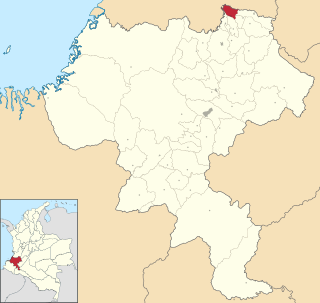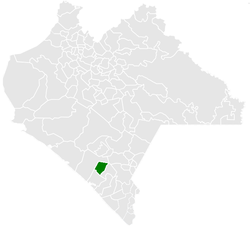
Demographic features of the population of the Netherlands include population density, ethnicity, education level, health of the population, economic status, religious affiliations and other aspects of the population.

Comitán is the fourth-largest city in the Mexican state of Chiapas. It is the seat of government of the municipality of the same name.

Japanese Brazilians are Brazilian citizens who are nationals or naturals of Japanese ancestry or Japanese immigrants living in Brazil or Japanese people of Brazilian ancestry. Japanese immigration to Brazil peaked between 1908 and 1960, with the highest concentration between 1926 and 1935. In 2022, Japan’s Ministry of Foreign Affairs stated that there were 2 million Japanese descendants in Brazil, making it the country with the largest population of Japanese origin outside Japan. However, in terms of Japanese citizens, Brazil ranked seventh in 2023, with 46.9 thousand Japanese citizens. Most of the Japanese-descendant population in Brazil has been living in the country for three or more generations and most only hold Brazilian citizenship. Nikkei is the term used to refer to Japanese people and their descendants.

Temixco is the fourth-largest city in the Mexican state of Morelos. It stands at 18°51′N99°14′W in the west-northwest part of the state.

Japantown (日本人街) is a common name for Japanese communities in cities and towns outside Japan. Alternatively, a Japantown may be called J-town, Little Tokyo or Nihonmachi (日本町), the first two being common names for Japantown, San Francisco, Japantown, San Jose and Little Tokyo, Los Angeles.

Ocós is a municipality in the San Marcos Department of Guatemala. It is situated on the Pacific Ocean coast, very close to the border with Mexico at 4 m (13 ft) altitude and two big rivers: the Suchiate and the Naranjo rivers. On 23 January 2014, it lost about 2/3 of its territory when La Blanca was named the thirtieth San Marcos Department municipality.

Soconusco is a region in the southwest corner of the state of Chiapas in Mexico along its border with Guatemala. It is a narrow strip of land wedged between the Sierra Madre de Chiapas mountains and the Pacific Ocean. It is the southernmost part of the Chiapas coast extending south from the Ulapa River to the Suchiate River, distinguished by its history and economic production. Abundant moisture and volcanic soil has always made it rich for agriculture, contributing to the flowering of the Mokaya and Olmec cultures, which were based on Theobroma cacao and rubber of Castilla elastica.

Immigration to Mexico has been important in shaping the country's demographics. Since the early 16th century, with the arrival of the Spanish, Mexico has received immigrants from Europe, Africa, the Americas, and Asia. Today, millions of their descendants still live in Mexico and can be found working in different professions and industries.

Puerto Tejada is a town and municipality in the Cauca Department, Colombia.

Korean immigration to Mexico began in 1905. The first Korean migrant workers settled in Yucatán, while more recent migrants from South Korea often choose Mexico City as their destination. However, according to the embassy, it's estimated that 11,800 Korean nationals living in Mexico and 1,000,000 Mexicans of Korean descent.

Naco is a Mexican town in Naco Municipality located in the northeast part of Sonora state on the border with the United States. It is directly across from the unincorporated town of Naco, Arizona. The name Naco comes from the Opata language and means prickly pear cactus. The town saw fighting during the Mexican Revolution and during a rebellion led by General José Gonzalo Escobar in 1929. During the second conflict, an American pilot by the name of Patrick Murphy volunteered to bomb federal forces for the rebels, but mistakenly bombed Naco, Arizona, instead. Today, the town has been strongly affected by the smuggling of drugs, people and weapons across the international border.

American Mexicans are Mexicans of full or partial Americans heritage, who are either born in, or descended from migrants from the United States and its territories.
Talayuela is a municipality located in the province of Cáceres, Extremadura, (Spain). Talayuela's name comes from "atalayuela", related to the Spanish word "Atalaya", which means "watch tower".

Japanese Mexicans are Mexican citizens of Japanese descent. Organized Japanese immigration to Mexico occurred in the 1890s with the foundation of a coffee-growing colony in the state of Chiapas. Although this initiative failed, it was followed by greater immigration from 1900 to the beginning of World War II. However, it never reached the levels of Japanese immigration to the Americas such as Brazil or the United States.

Brazil had an official resident population of 203 million in 2022, according to IBGE. Brazil is the seventh most populous country in the world and the second most populous in the Americas and Western Hemisphere.

Carlos Kasuga Osaka is a Mexican businessman, philanthropist and public speaker. He is the founder of the Mexican division of the yogurt company Yakult, and he served as its director. He also founded the Liceo Mexicano Japonés and served as its chair. He also served as the president of the Pan American Nikkei Association, having done so since the 1981 establishment of the organization until 1995.
This article delineates the issue of immigration in different countries.

Asian Mexicans are Mexicans of Asian descent. Asians are considered cuarta raíz of Mexico in conjunction with the two main roots: Native and European, and the third African root.
Immigration in Guatemala constitutes less than 1%, some 140,000 people, and most come from neighboring countries. Guatemala's historic ethnic composition is mostly immigrant stock from Europe and as well as Asian and Africans brought during the era of slavery. Currently, the composition of Guatemala consists mostly of mestizos, Amerindians and Europeans, and to a lesser extent, Garifuna. In recent decades, immigration to Guatemala has led to an increase in desire for more businesses and tourist attractions, after there had been a considerable drop from 1950 to 1980.
At the 2011 census, the number of immigrants in Costa Rica totaled about 390,000 individuals, or about 9% of the country's population. Following a considerable drop from 1950 through 1980, immigration to Costa Rica has increased in recent decades.


















